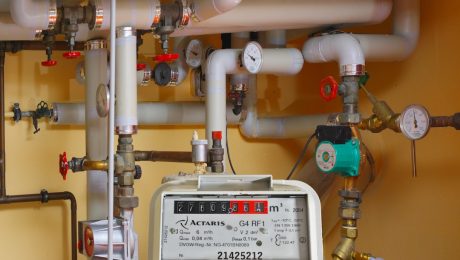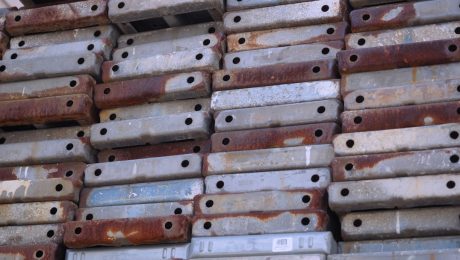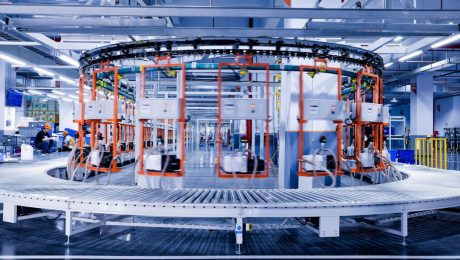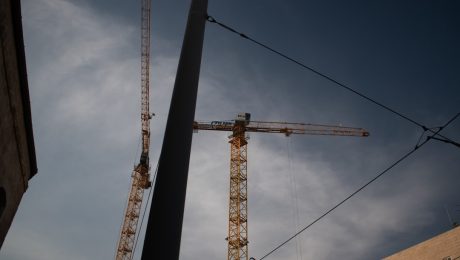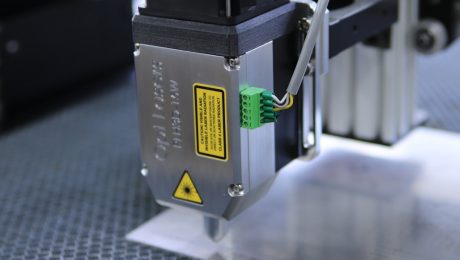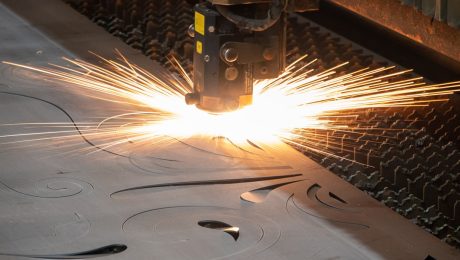body {
font-family: sans-serif;
line-height: 1.6;
}
h1, h2, h3 {
color: #333;
}
h1 {
font-size: 2.5em;
}
h2 {
font-size: 2em;
}
h3 {
font-size: 1.5em;
}
In today’s competitive marketplace, demonstrating the quality and safety of your products is paramount. Test reports and certifications are no longer optional extras; they’re essential tools for building trust, complying with regulations, and gaining a competitive edge. This comprehensive guide will delve into the intricacies of test reports and certifications, helping you understand their significance and navigate the landscape of product validation.
Understanding the Role of Test Reports
Test reports are the cornerstone of product validation. They provide documented evidence of the testing process, outlining the methods used, the results obtained, and the conclusions drawn. These reports are crucial for several reasons:
- Demonstrating Compliance: Test reports prove your product meets specific standards and regulations, protecting you from legal repercussions and ensuring consumer safety.
- Identifying Areas for Improvement: Detailed reports highlight weaknesses or areas needing further development, allowing for iterative product enhancement.
- Building Consumer Confidence: Transparent reporting builds trust with customers, assuring them of the product’s quality and reliability.
- Facilitating Internal Quality Control: Reports help track performance over time, identifying trends and ensuring consistent quality.
- Supporting Claims: Reports serve as concrete evidence to substantiate marketing claims about your product’s features and performance.
A comprehensive test report will typically include details on the testing methodology, equipment used, sample details, observed results, data analysis, and a final conclusion. The level of detail will depend on the specific testing requirements and the intended audience.
The Significance of Certifications
Certifications take the validation process a step further. They represent independent verification that your product meets specific standards, often issued by accredited organizations. These certifications act as a seal of approval, offering numerous benefits:
- Enhanced Credibility: Certifications from reputable organizations significantly boost consumer trust and confidence.
- Market Access: Many industries and regions require specific certifications for product sale and distribution. Certifications open doors to new markets.
- Competitive Advantage: Holding relevant certifications gives your product a competitive edge over uncertified alternatives.
- Reduced Risk: Certifications mitigate risks associated with product liability and legal challenges.
- Streamlined Processes: In some cases, certifications can simplify regulatory compliance and expedite customs clearance.
Examples of common certifications include ISO 9001 (quality management), ISO 14001 (environmental management), CE marking (European conformity), and UL certification (safety testing).
Navigating Different Testing Standards
The world of testing standards can seem complex. Different industries and products have their own specific requirements. Understanding these standards is crucial for obtaining relevant certifications. Some key aspects to consider include:
- Industry-Specific Standards: Industries like medical devices, automotive, and aerospace have rigorous standards that must be met.
- Regional Regulations: Regulations vary significantly across different countries and regions, requiring compliance with local laws.
- Testing Laboratories: Choosing a reputable and accredited testing laboratory is essential for ensuring the validity and reliability of your test results.
- Cost and Time Considerations: Testing and certification processes can be time-consuming and costly, requiring careful planning and budgeting.
- Maintaining Certifications: Certifications often require regular audits and re-certification to maintain their validity.
Thorough research and consultation with experts are essential to navigate the complexities of testing standards and ensure compliance.
The Importance of Choosing the Right Testing Laboratory
The credibility of your test reports and certifications hinges on the competence and reputation of the testing laboratory you choose. Selecting the wrong laboratory can compromise the validity of your results and potentially damage your brand’s reputation. Key factors to consider when selecting a laboratory include:
- Accreditation: Ensure the laboratory is accredited by a recognized body, such as ISO/IEC 17025.
- Expertise: Confirm the laboratory has the necessary expertise and experience to handle your specific testing requirements.
- Reputation: Research the laboratory’s reputation and check for client testimonials and reviews.
- Capacity: Verify the laboratory has the capacity to handle your testing needs within your timeframe.
- Cost and Transparency: Obtain a clear understanding of the laboratory’s fees and payment terms.
Due diligence in selecting a testing laboratory is an investment that protects your brand and ensures the accuracy and reliability of your test results.
Leveraging Test Reports and Certifications for Business Growth
Test reports and certifications are not merely compliance exercises; they are strategic assets that can significantly contribute to business growth. They can:
- Enhance Brand Reputation: Demonstrating commitment to quality builds trust and strengthens brand loyalty.
- Attract Investors: Certifications can be a powerful tool in attracting investors and securing funding.
- Expand Market Reach: Compliance with international standards opens doors to new markets and customer segments.
- Reduce Liability Risks: Certifications help mitigate potential legal and financial risks associated with product defects.
- Boost Sales and Revenue: Consumers are increasingly seeking out products with reputable certifications, driving sales.
By strategically leveraging test reports and certifications, businesses can solidify their position in the market, attract new customers, and achieve sustainable growth.
In conclusion, understanding and effectively utilizing test reports and certifications are crucial for success in today’s market. By prioritizing quality, compliance, and transparency, businesses can build trust, enhance their brand reputation, and unlock new opportunities for growth.
body {
font-family: sans-serif;
line-height: 1.6;
}
h1, h2, h3 {
color: #333;
}
Boiler tubes are the unsung heroes of power generation and industrial heating. These seemingly simple components play a crucial role in transferring heat efficiently, driving turbines, and powering countless processes. This comprehensive guide delves into the technology, materials, applications, and maintenance of boiler tubes, providing a detailed understanding of their vital function.
The Science Behind Boiler Tube Technology
Boiler tubes are essentially conduits designed to withstand extreme temperatures and pressures while facilitating the efficient transfer of heat. The technology behind their design involves careful consideration of several factors: material selection (discussed below), tube diameter and length optimization for efficient heat transfer and minimal pressure drop, and precise manufacturing techniques to ensure dimensional accuracy and surface finish. Advanced techniques like finned tubes enhance surface area for increased heat exchange, while specialized bends and configurations cater to specific boiler designs. The internal flow dynamics are crucial; turbulence promoters can be incorporated to improve heat transfer coefficients. Understanding the principles of convective heat transfer is fundamental to designing effective boiler tubes.
Materials: The Backbone of Boiler Tube Strength and Durability
The choice of material for boiler tubes is paramount, dictated by factors such as operating temperature, pressure, and the type of fluid being heated. Common materials include:
- Carbon Steel: Widely used for lower-pressure and temperature applications due to its cost-effectiveness and weldability. However, its susceptibility to corrosion limits its application in high-pressure or corrosive environments.
- Alloy Steel: Offers enhanced strength, creep resistance, and corrosion resistance compared to carbon steel. Various alloying elements (chromium, molybdenum, vanadium) are added to tailor the properties for specific operating conditions. These are commonly used in high-pressure and high-temperature boilers.
- Stainless Steel: Provides excellent corrosion resistance, particularly in aggressive environments. Different grades of stainless steel (e.g., 304, 316, 321) offer varying degrees of corrosion resistance and high-temperature strength. They are often preferred in boilers handling corrosive fluids.
- Non-Ferrous Metals: Materials like copper alloys (e.g., Admiralty brass, copper-nickel alloys) offer excellent corrosion resistance and high thermal conductivity, making them suitable for specific applications, although they are generally more expensive.
The selection of the appropriate material is a critical engineering decision that significantly impacts the boiler’s lifespan, safety, and efficiency.
Applications: Powering Industries Across the Globe
Boiler tubes find widespread applications in diverse industries, including:
- Power Generation: Fossil fuel power plants, nuclear power plants, and combined cycle power plants heavily rely on boiler tubes to generate steam that drives turbines and produces electricity.
- Industrial Heating: Boiler tubes are essential in various industrial processes requiring high-temperature heating, such as chemical processing, refineries, paper mills, and food processing plants.
- Heat Exchangers: Many heat exchangers utilize boiler tubes to efficiently transfer heat between different fluids, such as in HVAC systems, refrigeration systems, and waste heat recovery systems.
- Waste-to-Energy Plants: These plants use boiler tubes to generate energy from waste materials, contributing to sustainable energy solutions.
The versatility of boiler tubes makes them indispensable across a wide spectrum of industries.
Maintenance and Inspection: Ensuring Long-Term Reliability
Regular maintenance and inspection are crucial for ensuring the longevity and safety of boiler tubes. This involves:
- Visual Inspection: Regular visual checks for signs of corrosion, erosion, scaling, or other damage.
- Non-Destructive Testing (NDT): Techniques like ultrasonic testing, radiographic testing, and eddy current testing are used to detect internal flaws and defects without damaging the tubes.
- Chemical Cleaning: Periodic cleaning to remove deposits and scale buildup that can reduce heat transfer efficiency and cause corrosion.
- Tube Replacement: Damaged or worn-out tubes need to be replaced to maintain the boiler’s integrity and operational efficiency.
A proactive maintenance program is vital for preventing costly downtime and ensuring safe operation.
Future Trends in Boiler Tube Technology
Ongoing research and development are focused on improving the performance and efficiency of boiler tubes. Key trends include:
- Advanced Materials: Research into new materials with enhanced high-temperature strength, corrosion resistance, and creep resistance is ongoing. This includes exploring advanced alloys, composites, and ceramic materials.
- Improved Manufacturing Techniques: Advanced manufacturing processes like additive manufacturing (3D printing) offer the potential to create complex tube geometries with optimized heat transfer characteristics.
- Enhanced Surface Treatments: Coatings and surface modifications can improve corrosion resistance, reduce fouling, and enhance heat transfer efficiency.
- Smart Monitoring and Diagnostics: The integration of sensors and data analytics allows for real-time monitoring of tube condition, enabling predictive maintenance and preventing unexpected failures.
These advancements will contribute to more efficient, reliable, and sustainable boiler systems in the future.
Tags: boiler tubes, boiler tube technology, boiler tube materials, boiler tube applications, boiler maintenance
Annealed wire, a marvel of metallurgical engineering, plays a crucial role in countless everyday products and sophisticated industrial applications. Its unique properties, stemming from a carefully controlled heat treatment process, make it incredibly versatile and indispensable across various sectors. This post delves deep into the world of annealed wire, exploring its applications and highlighting its significant contributions to modern manufacturing.
Understanding the Annealing Process and its Impact on Wire Properties
Annealing is a heat treatment process that alters the microstructure of a metal, significantly impacting its physical properties. For wire, this involves heating the wire to a specific temperature, holding it there for a predetermined time, and then slowly cooling it. This process relieves internal stresses within the wire, making it more ductile (capable of being drawn into wire) and malleable (easily shaped). The result is a wire that’s significantly softer, more flexible, and easier to work with compared to its unannealed counterpart. The specific annealing temperature and cooling rate are carefully controlled to achieve the desired properties for the intended application. Different annealing techniques, such as stress-relief annealing, process annealing, and full annealing, are employed depending on the required outcome. Understanding these processes is key to selecting the appropriate annealed wire for a specific application.
Annealed Wire in the Electronics Industry: Precision and Reliability
The electronics industry relies heavily on the precision and reliability of annealed wire. Its softness and ductility make it ideal for intricate wiring in electronic components and circuits. In printed circuit boards (PCBs), annealed copper wire is used extensively for connecting various components. Its ability to be easily bent and shaped allows for efficient and compact circuit designs. The high conductivity of annealed copper wire ensures minimal signal loss and efficient power transmission. Furthermore, annealed wire’s flexibility prevents stress-related fractures, ensuring the longevity and reliability of electronic devices. The use of annealed wire in microelectronics is particularly critical, demanding extremely fine gauges and precise control over its properties.
Applications in the Automotive Industry: Strength and Durability
The automotive industry utilizes annealed wire in various components, demanding both strength and flexibility. Annealed steel wire, for instance, is frequently used in springs, providing the necessary elasticity and resilience for suspension systems, clutches, and other critical components. Its ability to withstand repeated stress and strain without failure is crucial for ensuring vehicle safety and performance. Furthermore, annealed wire is incorporated into wiring harnesses, connecting various electrical systems within the vehicle. The flexibility of the annealed wire allows for easy routing and installation, while its durability ensures reliable operation even under harsh conditions. The selection of the appropriate grade of annealed steel wire depends on the specific application’s requirements for strength, fatigue resistance, and corrosion resistance.
Annealed Wire in the Manufacturing of Springs and Coils: Shaping Versatility
The manufacturing of springs and coils heavily relies on the malleability and formability of annealed wire. The annealing process renders the wire highly ductile, enabling it to be easily formed into complex shapes and configurations. Different types of annealed wire, including steel, copper, and various alloys, are used depending on the required spring properties, such as spring rate, fatigue resistance, and corrosion resistance. The precise control over the annealing process allows manufacturers to tailor the wire’s properties to meet specific spring design requirements. From small precision springs used in clocks and watches to large industrial springs used in heavy machinery, annealed wire plays a critical role in ensuring the performance and reliability of these components.
Beyond the Basics: Niche Applications of Annealed Wire
The applications of annealed wire extend far beyond the commonly known uses. In the medical industry, annealed wire is used in the manufacturing of surgical instruments, stents, and other medical devices, requiring high biocompatibility and flexibility. In the aerospace industry, lightweight yet strong annealed wire alloys are employed in aircraft wiring and other critical components. The textile industry uses annealed wire in weaving machines and other specialized equipment. Furthermore, annealed wire finds applications in the construction industry, particularly in reinforcement and support structures. The versatility of annealed wire, coupled with its ability to be tailored to specific requirements through precise annealing techniques, makes it a valuable material across a wide range of industries and applications.
The versatility and adaptability of annealed wire make it a cornerstone material in numerous industries. Its unique properties, derived from the precise control of the annealing process, ensure its continued importance in modern manufacturing and technological advancements.
SEO-Friendly Tags:
- Annealed Wire
- Annealing Process
- Wire Applications
- Metal Wire
- Industrial Wire
The maritime industry demands robust and reliable materials. Steel pipes, in particular, play a crucial role in the construction and operation of ships, from carrying vital fluids to forming structural components. Selecting the appropriate steel pipes is paramount for ensuring the safety, longevity, and efficiency of any vessel. This comprehensive guide delves into the intricacies of choosing the right steel pipes for shipbuilding, covering key aspects from material selection to quality control.
1. Understanding Steel Grades for Shipbuilding Applications
The choice of steel grade significantly impacts the performance and lifespan of steel pipes in shipbuilding. Different grades offer varying levels of strength, corrosion resistance, weldability, and toughness. Commonly used steel grades include:
- ASTM A53: This grade is suitable for low-pressure applications and general-purpose piping systems. Its relatively low cost makes it attractive for less demanding parts of the vessel.
- ASTM A106: Offering higher strength than A53, ASTM A106 is preferred for high-pressure steam and fluid service lines. Its enhanced mechanical properties make it ideal for critical systems.
- ASTM A312: Specifically designed for high-temperature service, ASTM A312 is often chosen for applications involving high-pressure steam or other heated fluids. Different grades within A312 cater to specific temperature ranges.
- API 5L: This specification focuses on line pipes used in the oil and gas industry, many of which find applications in offshore platforms and tankers. API 5L grades offer exceptional strength and corrosion resistance.
- High-Yield Strength Steels: For demanding structural applications, high-yield strength steels are employed to minimize weight and maximize strength. These are often used in critical structural components.
The selection of a specific grade depends on factors such as the operating pressure, temperature, corrosive environment, and the specific application within the vessel.
2. Manufacturing Processes: Seamless vs. Welded Pipes
Steel pipes for shipbuilding are primarily manufactured through two processes: seamless and welded. Each offers distinct advantages and disadvantages:
Seamless Pipes: Produced by piercing a heated steel billet, seamless pipes are known for their superior strength, ductility, and resistance to fatigue. They are ideal for high-pressure applications and critical structural components where integrity is paramount. However, seamless pipes are generally more expensive than welded pipes.
Welded Pipes: Created by joining two steel sheets or plates, welded pipes offer a cost-effective alternative for less demanding applications. Different welding techniques, such as electric resistance welding (ERW) and submerged arc welding (SAW), are employed. While welded pipes are generally suitable for many shipbuilding applications, their strength and resistance to fatigue can be lower than seamless pipes, especially at higher pressures.
The choice between seamless and welded pipes depends on the specific requirements of the application, balancing cost and performance characteristics.
3. Critical Applications of Steel Pipes in Shipbuilding
Steel pipes are ubiquitous throughout a ship’s structure and systems. Key applications include:
- Fluid Transfer Systems: Pipes transport fuel, water, lubricants, and other fluids throughout the vessel. The choice of pipe material and diameter is crucial for efficient and safe operation.
- Pressure Vessels and Tanks: Steel pipes are frequently used in the construction of pressure vessels and storage tanks for various fluids and gases.
- Structural Components: In some cases, steel pipes are incorporated into the ship’s structural framework, providing strength and support.
- Fire Protection Systems: Fire sprinkler and fire suppression systems rely heavily on robust steel pipe networks.
- Ballast Systems: Pipes are integral to the ballast water management systems, which are crucial for ship stability and environmental protection.
- Offshore Platforms: In offshore construction, steel pipes form the backbone of oil and gas platforms, withstanding harsh marine environments.
Understanding the specific demands of each application is essential for selecting the appropriate steel pipe.
4. Ensuring Quality Control and Compliance
Stringent quality control measures are necessary to guarantee the integrity and safety of steel pipes used in shipbuilding. This involves several stages:
- Material Testing: Rigorous testing verifies that the steel meets the specified grade and mechanical properties.
- Dimensional Inspection: Precise measurements ensure that the pipes conform to the required dimensions and tolerances.
- Non-Destructive Testing (NDT): Techniques such as ultrasonic testing (UT) and radiographic testing (RT) detect internal flaws and defects.
- Hydrostatic Testing: Pressure testing verifies the pipe’s ability to withstand the intended operating pressure.
- Compliance with Standards: Adherence to relevant international standards, such as ISO and API, is mandatory.
Thorough quality control ensures the reliability and safety of the entire vessel.
5. Future Trends in Steel Pipes for Shipbuilding
The shipbuilding industry is constantly evolving, and so are the demands on steel pipes. Future trends include:
- Advanced Steel Grades: The development of high-strength, lightweight, and corrosion-resistant steel grades will continue to improve the efficiency and longevity of ships.
- Improved Manufacturing Techniques: Innovations in welding and seamless pipe production will lead to higher quality and more cost-effective manufacturing processes.
- Sustainable Practices: The industry is increasingly focused on reducing the environmental impact of shipbuilding, leading to the use of recycled steel and more sustainable manufacturing practices.
- Smart Pipes and Monitoring Systems: The integration of sensors and monitoring systems into steel pipes will allow for real-time condition monitoring and predictive maintenance.
These advancements will further enhance the performance and sustainability of steel pipes in the shipbuilding industry.
Choosing the right steel pipes is a critical decision in shipbuilding. Careful consideration of the factors discussed above – steel grade, manufacturing process, application, quality control, and future trends – is essential for ensuring the safety, longevity, and efficiency of any vessel.
Tags: steel pipes, shipbuilding, marine pipes, steel pipe grades, pipe manufacturing
The integrity of pipelines is paramount across various industries, from oil and gas to water distribution and chemical processing. A single point of failure can have devastating consequences, highlighting the critical importance of robust pipe product quality control systems. This comprehensive guide delves into the key aspects of ensuring consistently high-quality pipes throughout the manufacturing process.
1. Raw Material Inspection: The Foundation of Quality
The journey to a high-quality pipe begins with the selection and inspection of raw materials. This stage involves rigorous checks on the chemical composition, mechanical properties, and surface condition of the base materials, typically steel or plastic. Spectrometric analysis is crucial for determining the precise chemical composition, ensuring it adheres to the specified standards for strength, corrosion resistance, and weldability. Furthermore, tensile testing and impact testing assess the material’s strength and toughness, respectively. Visual inspection identifies surface defects like cracks, pits, or laminations, which can compromise the pipe’s integrity. Detailed documentation of these inspections is essential for traceability and accountability throughout the manufacturing process. The use of certified suppliers and material traceability systems further strengthens this crucial first step.
2. In-Process Monitoring: Maintaining Quality Throughout Manufacturing
Maintaining quality isn’t a one-time event; it’s a continuous process. In-process monitoring involves regular checks throughout the manufacturing stages. For steel pipes, this includes monitoring the parameters during the rolling, welding (if applicable), and forming processes. Temperature control is critical during welding to ensure proper fusion and prevent defects. Ultrasonic testing might be employed to detect internal flaws during the pipe forming stage. For plastic pipes, extrusion parameters like temperature, pressure, and die dimensions are closely monitored to ensure consistent wall thickness and dimensions. Regular calibration of measuring instruments and adherence to strict process parameters are crucial for consistent results. Data logging and statistical process control (SPC) techniques help identify trends and potential problems early on, allowing for timely corrective actions.
3. Dimensional Checks: Ensuring Precision and Conformity
Precise dimensions are crucial for ensuring the proper fit and function of pipes. Dimensional checks involve measuring various parameters such as outer diameter, inner diameter, wall thickness, straightness, and ovality. These measurements are performed using sophisticated instruments like laser scanners, calipers, and micrometers, ensuring accuracy and repeatability. Deviation from specified dimensions can affect the pipe’s structural integrity, pressure resistance, and compatibility with connecting fittings. Statistical analysis of dimensional data helps identify any systematic errors or inconsistencies in the manufacturing process. Automated dimensional inspection systems are increasingly being employed to improve efficiency and reduce human error, providing real-time feedback and enabling immediate corrective actions.
4. Testing Procedures: Verifying Performance and Durability
A range of destructive and non-destructive testing procedures are employed to validate the pipe’s performance and durability. Hydrostatic testing involves pressurizing the pipe with water to assess its ability to withstand internal pressure. This test helps identify weaknesses or leaks. Non-destructive testing methods, such as ultrasonic testing (UT), radiographic testing (RT), and magnetic particle testing (MT), are used to detect internal flaws and surface defects without damaging the pipe. Burst testing determines the pipe’s maximum pressure capacity before failure. The choice of testing methods depends on the pipe material, diameter, intended application, and relevant industry standards. Thorough documentation of test results, including any deviations from specifications, is crucial for ensuring compliance and traceability.
5. Advanced Quality Management Systems: A Holistic Approach
Implementing a comprehensive quality management system (QMS), such as ISO 9001, is crucial for ensuring consistent quality throughout the entire lifecycle of pipe production. This involves establishing clear quality objectives, defining responsibilities, implementing documented procedures, and conducting regular internal audits. A robust QMS encompasses all aspects of pipe production, from raw material procurement to final product delivery. It emphasizes continuous improvement through data analysis, feedback mechanisms, and corrective actions. The use of advanced software solutions for quality data management and analysis helps streamline processes, improve efficiency, and enhance decision-making. Regular training of personnel on quality control procedures and best practices is essential for maintaining a high level of quality awareness and competence.
Effective pipe product quality control systems are not merely a cost; they are an investment in safety, reliability, and long-term operational efficiency. By implementing rigorous procedures and utilizing advanced technologies, manufacturers can ensure the delivery of high-quality pipes that meet the demanding requirements of diverse industries.
SEO-Friendly Tags:
- Pipe Quality Control
- Pipeline Inspection
- Pipe Manufacturing Quality
- Non-Destructive Testing Pipes
- Quality Management in Pipe Industry
The steel industry, a cornerstone of global infrastructure, has historically been a significant contributor to greenhouse gas emissions. However, a green revolution is underway, driven by the urgent need for sustainable practices. This post explores the innovative approaches transforming steel manufacturing into a more environmentally responsible process.
1. Reducing Carbon Emissions in Steel Production: The Core Challenge
The primary environmental concern surrounding steel production is its massive carbon footprint. Traditional blast furnace methods rely heavily on coking coal, a major source of CO2 emissions. The process involves reducing iron ore with coke at extremely high temperatures, releasing substantial amounts of greenhouse gases into the atmosphere. To achieve eco-friendly steel manufacturing, reducing these emissions is paramount. This requires a multi-pronged approach focusing on several key areas, which we will explore in the following sections.
2. Hydrogen-Based Steelmaking: A Promising Solution
One of the most promising advancements in green steel production is the use of hydrogen as a reducing agent instead of coking coal. Hydrogen-based steelmaking, also known as direct reduced iron (DRI) with hydrogen, significantly reduces CO2 emissions. The process involves reacting hydrogen with iron ore at high temperatures to produce iron, with water vapor as the primary byproduct. While water vapor does contribute to greenhouse gases in certain atmospheric conditions, it’s far less impactful than the CO2 released by coal-based methods. The challenge lies in the large-scale production of green hydrogen, which ideally should be generated from renewable energy sources like solar and wind power, ensuring the entire process remains sustainable.
3. Carbon Capture, Utilization, and Storage (CCUS): Mitigating Existing Emissions
While transitioning to hydrogen-based steelmaking is crucial, it’s not a quick fix. In the interim, Carbon Capture, Utilization, and Storage (CCUS) technologies play a vital role in mitigating emissions from existing blast furnaces. CCUS involves capturing CO2 emissions from the steelmaking process, either before or after they enter the atmosphere. Captured CO2 can then be utilized in various industrial processes or stored underground in geological formations, preventing its release into the atmosphere. Although CCUS technology is still developing and faces challenges in terms of cost and scalability, it offers a crucial bridge towards a more sustainable steel industry.
4. Recycling and Circular Economy Approaches: Closing the Steel Loop
Steel is a highly recyclable material, and maximizing its reuse is a key component of eco-friendly manufacturing. Recycling steel requires significantly less energy than producing it from raw materials, drastically reducing the carbon footprint. Implementing robust recycling programs, improving scrap collection infrastructure, and promoting the use of recycled steel in construction and other industries are vital steps. A circular economy approach, focusing on minimizing waste and maximizing resource utilization throughout the steel’s lifecycle, is crucial for long-term sustainability.
5. Sustainable Energy Sources for Steel Mills: Powering the Green Transition
The energy used to power steel mills contributes significantly to their environmental impact. Shifting to renewable energy sources, such as solar, wind, and hydropower, is essential for reducing the overall carbon footprint. Integrating on-site renewable energy generation into steel mills can significantly decrease their reliance on fossil fuels. Furthermore, improving energy efficiency within the steelmaking process itself can further reduce energy consumption and emissions. This involves optimizing processes, investing in advanced technologies, and implementing best practices to minimize energy waste.
The transition to eco-friendly steel manufacturing is a complex undertaking requiring significant investment and collaboration across the industry, governments, and research institutions. However, the potential environmental and economic benefits are substantial. By embracing innovative technologies and sustainable practices, we can pave the way for a greener future, ensuring that steel production plays a constructive role in building a more sustainable world.
SEO Tags:
- Green Steel
- Sustainable Steel Manufacturing
- Hydrogen Steelmaking
- Carbon Capture Steel
- Steel Recycling
The construction industry is undergoing a significant transformation, driven by the need for sustainability, efficiency, and cost-effectiveness. Hybrid construction techniques, which combine different building materials and methods, are at the forefront of this revolution. This approach offers a powerful solution to overcome the limitations of traditional methods, resulting in stronger, more sustainable, and faster-built structures.
Understanding the Essence of Hybrid Construction
Hybrid construction involves strategically integrating two or more distinct building materials and construction methods within a single project. This isn’t simply about using different materials side-by-side; it’s about leveraging the unique strengths of each material to create a synergistic effect. For example, combining the lightweight and sustainable nature of timber with the strength and durability of steel or concrete. This approach allows architects and engineers to optimize the design for specific needs, resulting in structures that are both innovative and efficient.
Popular Hybrid Construction Material Combinations
The possibilities within hybrid construction are vast. Some of the most prevalent combinations include:
- Timber and Steel: This combination leverages the sustainable and renewable nature of timber for the framing and structural elements, while steel provides exceptional strength and stability, particularly in taller or more complex structures. Steel can be used for load-bearing columns, beams, and bracing, while timber forms the walls and floors.
- Concrete and Steel: Reinforced concrete structures are a classic example of hybrid construction. The compressive strength of concrete is enhanced by the tensile strength of steel reinforcement bars, creating incredibly strong and durable structures suitable for high-rise buildings and infrastructure projects.
- Timber and Concrete: This approach often involves a timber frame structure with concrete infill walls for enhanced fire resistance and thermal mass. This combination offers a good balance between sustainability, strength, and thermal performance.
- Steel and Masonry: Steel frames provide the structural support, while masonry materials (brick, block) are used for the external cladding and internal walls, offering aesthetic appeal and improved thermal insulation.
- Modular Construction with Hybrid Materials: Offsite modular construction lends itself well to hybrid approaches. Modules can be constructed using a variety of materials – timber, steel, or concrete – and then assembled on-site, significantly reducing construction time and disruption.
Advantages of Embracing Hybrid Construction Techniques
The benefits of hybrid construction are numerous and compelling:
- Increased Structural Strength and Stability: Combining materials with complementary properties leads to structures that are significantly stronger and more resistant to various loads and environmental factors.
- Enhanced Sustainability: The use of sustainable materials like timber alongside other materials reduces the overall environmental impact of the construction process.
- Improved Energy Efficiency: Careful material selection and design can lead to better thermal performance, reducing energy consumption for heating and cooling.
- Faster Construction Times: Optimized designs and prefabrication techniques often result in faster construction timelines, leading to cost savings and quicker project completion.
- Cost-Effectiveness: While initial material costs might vary, the overall cost-effectiveness can be significantly improved due to faster construction, reduced labor costs, and long-term energy savings.
- Design Flexibility: Hybrid construction opens up a wider range of design possibilities, allowing architects to create more innovative and aesthetically pleasing structures.
Challenges and Considerations in Hybrid Construction
While hybrid construction offers many advantages, it’s crucial to be aware of the potential challenges:
- Material Compatibility: Ensuring compatibility between different materials is crucial to prevent issues like corrosion, expansion, and contraction mismatch.
- Design Complexity: Hybrid designs require meticulous planning and expertise to ensure structural integrity and efficient material usage.
- Specialized Expertise: Construction teams need specialized knowledge and skills to work effectively with different materials and techniques.
- Cost Management: While potentially cost-effective in the long run, careful cost management is essential during the planning and execution phases.
The Future of Hybrid Construction: Trends and Innovations
The future of hybrid construction looks bright. Ongoing research and development are focused on:
- Advanced Materials: The incorporation of innovative materials like cross-laminated timber (CLT), engineered wood products, and high-performance concrete will further enhance the capabilities of hybrid systems.
- Digitalization and BIM: Building Information Modeling (BIM) is playing a crucial role in optimizing hybrid designs and ensuring efficient coordination between different materials and trades.
- Prefabrication and Modularization: The increasing adoption of offsite construction techniques will streamline the construction process and improve quality control.
- Sustainable Practices: The focus on sustainable materials and construction methods will continue to drive innovation in hybrid construction, leading to environmentally friendly and energy-efficient buildings.
In conclusion, hybrid construction techniques represent a significant advancement in the building industry. By intelligently combining different materials and methods, we can create structures that are stronger, more sustainable, and more cost-effective. As technology advances and our understanding of material science deepens, the potential of hybrid construction is only set to grow, shaping the future of the built environment.
Tags: hybrid construction, sustainable construction, green building, construction methods, timber frame construction
body {
font-family: sans-serif;
line-height: 1.6;
}
h1, h2, h3 {
color: #333;
}
Mechanical testing is crucial for ensuring the quality, safety, and performance of materials and components across various industries. From aerospace to automotive, understanding and effectively utilizing mechanical test devices is paramount. This comprehensive guide will delve into the intricacies of these devices, providing you with the knowledge and confidence to conduct accurate and reliable tests.
Understanding Different Types of Mechanical Test Devices
A wide array of mechanical test devices exist, each designed for specific testing purposes. Some common types include:
- Tensile Testing Machines: These machines measure the material’s resistance to tensile forces, determining properties like tensile strength, yield strength, and elongation. They are widely used for metals, plastics, and composites.
- Compression Testing Machines: These machines apply compressive forces to materials to determine compressive strength, yielding, and modulus of elasticity. Applications include testing concrete, ceramics, and other brittle materials.
- Fatigue Testing Machines: These machines subject materials to cyclic loading to determine their fatigue life and endurance limit. This is crucial for applications where components undergo repeated stress cycles.
- Hardness Testing Machines: These machines measure the material’s resistance to indentation or scratching, providing an indication of its hardness and strength. Common methods include Rockwell, Brinell, and Vickers hardness testing.
- Impact Testing Machines: These machines measure the material’s resistance to sudden impact forces, determining its toughness and resistance to fracture. Examples include Izod and Charpy impact tests.
The choice of device depends entirely on the specific material being tested and the properties of interest.
Safe Operation and Calibration Procedures
Safety is paramount when operating mechanical test devices. Before commencing any test, ensure you have:
- Received proper training and understand the device’s operation.
- Inspected the device for any damage or malfunction.
- Properly secured the specimen in the testing grips.
- Set the appropriate testing parameters based on the material and test standard.
- Used appropriate personal protective equipment (PPE), including safety glasses and gloves.
Regular calibration is essential to maintain the accuracy and reliability of the test results. Calibration should be performed according to the manufacturer’s instructions and relevant standards, using certified weights and standards.
Data Acquisition and Analysis Techniques
Modern mechanical test devices often include sophisticated data acquisition systems that record force, displacement, strain, and other relevant parameters during the test. This data is crucial for determining the material’s mechanical properties. Data analysis typically involves:
- Stress-Strain Curve Generation: Plotting the stress-strain curve allows for the determination of key mechanical properties such as yield strength, ultimate tensile strength, and modulus of elasticity.
- Statistical Analysis: Performing statistical analysis on multiple test results helps to assess the variability and reliability of the material properties.
- Data Reporting: Generating comprehensive reports that include test parameters, results, and relevant graphs is essential for documentation and quality control purposes.
- Software Utilization: Many testing machines come with software packages that automate data acquisition, analysis, and reporting, simplifying the process.
Troubleshooting Common Issues with Mechanical Testing Equipment
Even with proper care, mechanical test devices can encounter issues. Common problems include:
- Calibration Errors: Inaccurate calibration can lead to unreliable test results. Regular calibration is crucial.
- Sensor Malfunctions: Faulty sensors can lead to inaccurate data acquisition. Regular inspection and maintenance are essential.
- Mechanical Failures: Wear and tear on mechanical components can lead to inaccurate results or device malfunction. Regular maintenance and timely repairs are necessary.
- Software Glitches: Software issues can disrupt data acquisition and analysis. Regular software updates and troubleshooting are essential.
- Specimen Preparation Issues: Incorrect specimen preparation can affect test results. Following standardized preparation procedures is crucial.
Understanding the potential issues and having a plan for troubleshooting can significantly minimize downtime and ensure the accuracy of your testing.
Advanced Applications and Emerging Trends
Mechanical testing is constantly evolving. Advanced applications include:
- High-Temperature Testing: Testing materials at elevated temperatures to simulate real-world operating conditions.
- Creep Testing: Measuring the material’s deformation under sustained stress over time.
- Fracture Mechanics Testing: Analyzing the material’s behavior under fracture conditions.
- Digital Image Correlation (DIC): Using digital image processing to measure strain fields on the material surface.
- Integration with Simulation Software: Integrating experimental data with finite element analysis (FEA) for improved product design and optimization.
Staying abreast of these advancements ensures that you are utilizing the most effective and efficient methods for mechanical testing.
By understanding the various types of mechanical test devices, mastering safe operating procedures, analyzing data effectively, and troubleshooting potential issues, engineers can ensure the reliability and accuracy of their material testing, leading to improved product design, quality control, and overall safety.
SEO Tags:
mechanical testing, material testing, tensile testing, compression testing, fatigue testing
The steel industry is a complex and demanding sector, requiring a high level of expertise and specialized knowledge. To demonstrate competence and ensure quality, various certifications are offered, providing professionals with a competitive edge and organizations with assurance of best practices. This comprehensive guide will walk you through the world of steel industry certifications, covering everything from types of certifications to the application process and their benefits.
Understanding the Different Types of Steel Industry Certifications
The steel industry offers a diverse range of certifications, catering to various roles and specializations. These can broadly be categorized into:
- Material Certifications: These certifications verify the quality and properties of the steel itself, ensuring it meets specific standards (e.g., ASTM, ISO). This is crucial for applications demanding high strength, corrosion resistance, or specific mechanical properties. Examples include certifications for tensile strength, yield strength, impact resistance, and chemical composition.
- Welding Certifications: Welding is a critical process in steel fabrication, and certifications such as AWS (American Welding Society) certifications validate a welder’s proficiency in different welding processes and materials. These certifications often involve rigorous testing and demonstrate a welder’s ability to produce high-quality, reliable welds.
- Management System Certifications: Organizations can obtain certifications like ISO 9001 (Quality Management Systems) and ISO 14001 (Environmental Management Systems) to demonstrate their commitment to quality and environmental responsibility. These certifications showcase adherence to international best practices and can be a significant advantage in securing contracts.
- Personnel Certifications: These certifications recognize the skills and knowledge of individual professionals in various roles within the steel industry. This could range from metallurgical engineers to quality control inspectors, each with specific certification pathways tailored to their expertise.
- Specialized Certifications: Depending on the specific area of the steel industry, more specialized certifications might exist. For instance, certifications related to specific steelmaking processes, heat treatment techniques, or surface finishing methods could be available.
Benefits of Obtaining Steel Industry Certifications
The advantages of obtaining relevant steel industry certifications are numerous, both for individuals and organizations. For individuals, certifications:
- Enhance Career Prospects: Certifications demonstrate competence and increase marketability, opening doors to better job opportunities and higher salaries.
- Boost Professional Credibility: Holding recognized certifications builds trust and confidence among employers and clients.
- Improve Skill Set: The process of obtaining a certification often involves rigorous training and assessment, leading to improved skills and knowledge.
- Increase Earning Potential: Certified professionals often command higher salaries compared to their uncertified counterparts.
- Provide Professional Recognition: Certifications provide a visible marker of achievement and expertise.
For organizations, certifications:
- Improve Quality and Efficiency: Certified personnel and processes lead to better quality products and more efficient operations.
- Enhance Customer Confidence: Certifications demonstrate a commitment to quality and adherence to industry standards, boosting customer trust.
- Increase Competitiveness: Certifications can be a significant differentiator in a competitive market.
- Reduce Risks: Certified processes and personnel minimize the risk of errors and defects.
- Improve Compliance: Certifications help organizations meet regulatory requirements and industry standards.
Navigating the Certification Application Process
The application process for steel industry certifications varies depending on the specific certification and issuing body. Generally, the process involves:
- Identifying the Relevant Certification: Research the available certifications and choose the one that best suits your needs and career goals.
- Meeting Eligibility Requirements: Check the eligibility criteria, which may include experience, education, or previous certifications.
- Completing Required Training: Many certifications require completing specific training courses or programs.
- Undergoing Examination or Assessment: Most certifications involve some form of examination or assessment to evaluate your knowledge and skills.
- Submitting the Application: Complete the application form and submit all required documentation.
- Paying Application Fees: There are typically application fees associated with the certification process.
- Maintaining Certification: Many certifications require ongoing professional development and renewal to maintain their validity.
Maintaining Your Steel Industry Certifications
Once you’ve earned a steel industry certification, it’s crucial to maintain it. This often involves:
- Continuing Education: Stay updated with the latest industry trends and technologies through ongoing professional development.
- Renewal Requirements: Understand and meet the renewal requirements, which may involve re-examination, continuing education credits, or other stipulations.
- Professional Development Activities: Participate in conferences, workshops, and other professional development activities to enhance your skills and knowledge.
- Staying Informed: Keep abreast of changes in industry standards and regulations.
- Networking: Connect with other professionals in the field to share knowledge and best practices.
Choosing the Right Certification for Your Career Path
Selecting the appropriate certification is crucial for maximizing its impact on your career. Consider the following factors:
- Your Current Role and Responsibilities: Choose a certification that aligns with your current job and future career aspirations.
- Industry Recognition and Accreditation: Ensure the certification is recognized and respected within the steel industry.
- Cost and Time Commitment: Weigh the cost and time investment required to obtain the certification against the potential benefits.
- Career Goals: Align your certification choice with your long-term career goals and ambitions.
- Employer Requirements: Check if your employer encourages or requires specific certifications.
By carefully considering these aspects and thoroughly researching the available options, you can make an informed decision and choose the certification that best supports your professional development and career advancement within the dynamic steel industry.
Tags: Steel Industry Certification, Steel Certifications, Welding Certification, ISO Certification, Quality Management Systems, Steel Industry Training
body { font-family: sans-serif; line-height: 1.6; }
h1, h2, h3 { color: #333; }
img { max-width: 100%; height: auto; }
The construction industry is undergoing a significant transformation, driven by the need for sustainable practices, faster construction times, and cost-effectiveness. Hybrid construction, a clever blend of traditional and modern building methods, is emerging as a leading solution. This approach leverages the strengths of various techniques to create structures that are both innovative and efficient. Let’s delve into the fascinating world of hybrid construction and explore its various facets.
1. Understanding the Core Principles of Hybrid Construction
Hybrid construction isn’t about simply combining two unrelated methods. It’s a strategic approach that carefully selects and integrates different building materials and techniques to optimize the overall project. This might involve combining timber framing with concrete elements for increased structural integrity, or using prefabricated modular units alongside in-situ concrete pouring for faster project completion. The key lies in understanding the unique properties of each material and method and employing them where they offer the most significant advantages. For example, timber offers excellent sustainability credentials and speed of construction, while concrete provides superior fire resistance and strength. Hybrid construction seeks the synergistic benefits of both.
2. Exploring Common Hybrid Construction Methods
Several popular hybrid construction methods are gaining traction. One prevalent approach is the combination of steel and concrete. Steel frames offer exceptional strength and flexibility, while concrete infill walls provide fire resistance and thermal mass. Another common method uses timber frames with cross-laminated timber (CLT) panels. CLT, a highly engineered wood product, offers exceptional strength and dimensional stability, making it ideal for taller structures. Furthermore, the integration of prefabricated modular components with traditional on-site construction is becoming increasingly popular, reducing construction time and improving quality control. Mass timber construction, utilizing large engineered wood elements, is another significant trend, often combined with steel or concrete for specific structural needs.
3. The Advantages of Embracing Hybrid Construction
The benefits of hybrid construction are numerous and compelling. Firstly, it significantly reduces construction time. Prefabrication and modular construction, often components of hybrid approaches, allow for parallel construction processes, accelerating project timelines. Secondly, it enhances sustainability. By strategically selecting materials like timber and recycled content, hybrid construction minimizes the environmental impact compared to traditional methods. Thirdly, it improves structural performance. The combined strengths of different materials lead to structures that are more resilient, durable, and capable of withstanding various environmental conditions. Finally, it offers greater design flexibility. The ability to combine different materials allows architects and engineers to create innovative and aesthetically pleasing designs that might not be possible using a single material or method.
4. Navigating the Challenges of Hybrid Construction
Despite its numerous advantages, hybrid construction presents some challenges. One key obstacle is the need for specialized knowledge and expertise. Successfully integrating different materials and construction methods requires a deep understanding of each component’s properties and their interactions. Effective project management and coordination are critical to ensure seamless integration and avoid delays. Furthermore, the initial cost of hybrid construction can sometimes be higher than traditional methods, although long-term cost savings from increased efficiency and durability often outweigh this initial investment. Finally, the availability of skilled labor proficient in multiple construction techniques can be a constraint in some regions.
5. The Future of Hybrid Construction: Trends and Innovations
The future of hybrid construction is bright, with ongoing innovations pushing the boundaries of what’s possible. We can expect to see increased use of advanced materials like high-performance concrete and engineered wood products. The integration of Building Information Modeling (BIM) will become even more crucial for effective design and coordination. Furthermore, advancements in prefabrication and modular construction technologies will lead to even faster and more efficient building processes. The focus on sustainability will continue to drive the development of hybrid systems that utilize recycled and renewable materials. Expect to see hybrid construction playing a pivotal role in the creation of sustainable, resilient, and efficient buildings for years to come.
In conclusion, hybrid construction offers a compelling approach to building, effectively combining the best features of various techniques to create structures that are efficient, sustainable, and innovative. While challenges remain, the ongoing advancements and growing adoption of hybrid methods suggest a promising future for this transformative approach to building design and construction.
Tags: Hybrid Construction, Sustainable Construction, Modern Construction, Prefabricated Construction, Modular Construction


